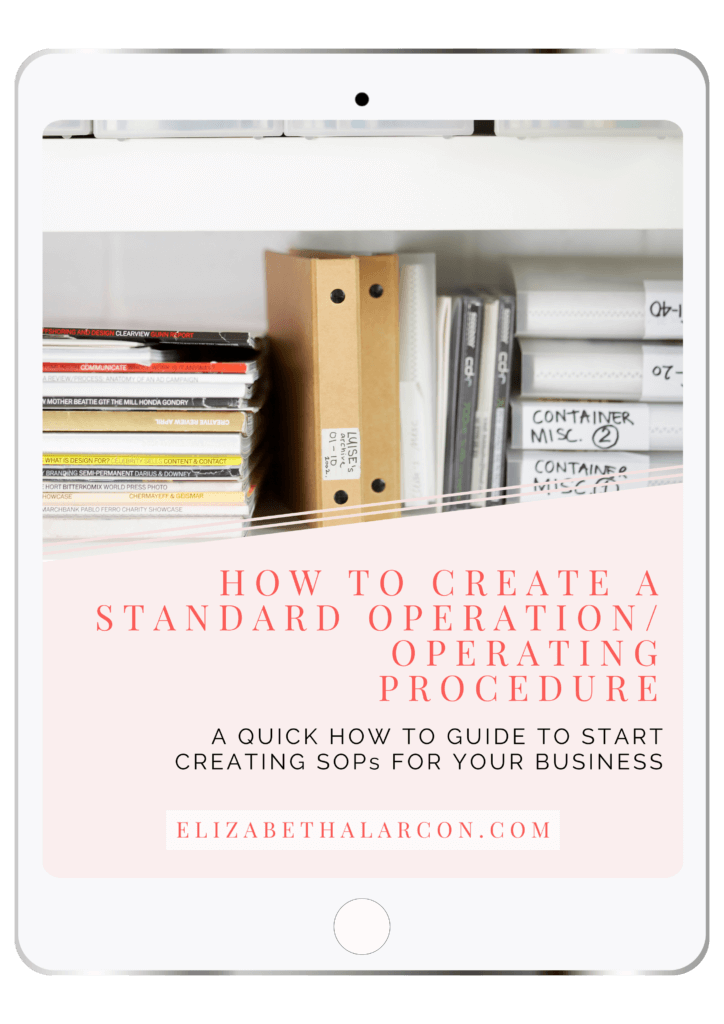How Standard Operating Procedures Can Make Your Business More Efficient
You may think standard operating procedures are only necessary for larger companies, but any business can benefit from standardizing things. Standard operation procedures help ensure consistency in your company's performance and make it easier to train new hires. They also standardize all the tasks needed in your business, making your employees more efficient. The key is getting everyone on board with the standard operating procedures you come up with.
What are Standard Operating Procedures
A standard operation procedure, or standard operating procedure, is a series of detailed instructions outlining the standard way to complete a business task. Standard operating procedures are created by businesses that want to standardize their departments or workflows. They serve as a reference point for employees and enable them to execute standard tasks without needing detailed explanations from their managers every time they need to be done. This standardization makes processes easier to replicate so your business can run more efficiently.
For standard operating procedures to accomplish these goals, they must be:
- It is detailed enough so employees have all the information they need to follow the standardized process, but not too detailed where it overcomplicates things and becomes restrictive.
- They are written in a standard format that a standard audience can easily read and understand.
- Measurable through standard reporting protocols.
Benefits of Using Standard Operating Procedures
A standard operating procedure can save you a lot of time and energy by ensuring that standard business tasks are executed the standard way every time they need to be done. Here are some reasons why standardizing your business processes is important for scaling your business:
START CREATING SOPS FOR YOUR BUSINESS TODAY!
I've created a quick how-to guide on creating SOPs for your business. Grab this guide now and start organizing your business!
1. Improved communication
The standard operating procedures standardize the standard language used across your business. Standardizing your business's written content isn't necessary, but standardizing key business processes means standardizing the words and phrases used in writing about those processes. This makes it much easier for employees to communicate with each other without any unintentional ambiguity or confusion over what they're being told versus what you're telling them.
2. Reduced risk of human error
If an employee can complete a task using standard operating procedures, there will be little room for human error when performing the task according to said procedures. Furthermore, if standard consequences are applied whenever people fail to follow standard operating protocols, they will do everything they can to standardize the workflows within their department.

3. Reduced need for external guidance
Suppose you've implemented standard operating procedures across your organization. In that case, employees should be able to standardize more efficiently than if they had to sift through non-standardized business processes whenever they needed to learn how to standardize a specific business task. Just like standard consequences ensure consistency in doing business the standard way, standard operating procedures also ensure consistency by giving people all the information they need for standardizing tasks.
Additionally, suppose standard operating procedures are written enough. In that case, external consultants won't be necessary to guide your employees on how exactly specific tasks should be completed as long as everyone is given access to these protocols.
4. Reduced need for extensive training sessions
If your business's employees have standard operating procedures to follow, there will be less confusion over how exactly tasks should be completed and less time wasted on giving employees standard training on standardizing business processes. By first standardizing the language these processes are discussed in-house, you can ensure that internal ‘training' will consist of nothing more than people being told which parts of the standard operating procedure they need to read and follow for any given business task.
This means employees won't require as much time on training or have as many opportunities to disengage from these sessions due to standard confusion.

How To Develop An Effective SOP That Will Work Best For Your Business
Standard operation procedures take time to create, but they will pay dividends by giving you a framework to build your business.
The first step is clearly defining what standard operation procedures would look like within your organization. This requires you to know what roles must be performed in your business, what positions are necessary to run the standard operating procedures you've designed, and who will perform each task.
Next, eliminate any superfluous tasks that don't need to be performed while leaving some wiggle room so that standard operating procedures can be adapted to different people's strengths and interests.
Then, write standard operating procedures for each task to standardize your business processes across your organization so that everyone knows what's expected of them and how to do their jobs while reducing errors caused by misinterpretation or ambiguity.
For each task, determine which quantifiable results will indicate successful completion and what standard deviation in results would signal a problem in the standard operating procedures. These measurements will include the standard time frame for completion, the amount of input from other parties involved, etc.
To create standard business process documentation, you must determine your audience and what level of detail they need to understand each standard operating procedure. This is where standardizing language across your organization becomes essential. Your choice of words should be standard among all employees so that people know exactly what's expected of them without any confusion or misinterpretation due to ambiguous or poorly worded descriptions. For example, if one person refers to a “red line” on a map when everyone calls it a “dotted line,” standardization won't work. Standard operating procedures will not be standard if standard descriptions of tools or products aren't used throughout your business.
Finally, you need standard operating procedures for when things don't go according to plan—when employees need direction even though there isn't a standard procedure within your organization. This can come in action items or checklists that employees can refer to if they forget their standard operation procedures.

Why It Is Important To Have a Well-Designed SOP
When standard operation procedures are followed, you'll find increased consistency in production success across your business. Your employees will also perform tasks more efficiently, with standard operating procedures taking some guesswork from their job responsibilities.
Standard operation procedures not only standardize how your employees perform certain tasks but also standardize success and failure scenarios across your business, giving everyone on your team a better chance to succeed. As standard operating procedures help to improve communication and standardize best practices, more consistent business processes will follow. Standard operating procedures can save money because mistakes are less likely to happen over time as people make decisions based on standard guidelines rather than ad hoc processes. These guidelines will increase efficiency and effectiveness in completing work—a win-win for everyone involved!
Examples of Standard Operating Procedures
- How To Make A Sale – establishing the steps of making a sale, who performs them, and standard times for completion.
- How To Create A New Customer Account – Establish the steps of creating a new account, who performs them, and standard times for completion.
- How To Prepare For New Hires – Establish standard procedures of getting all employees up to speed on company policies, standard operating procedures, etc., before the new hire begins their job duties.
- How To Handle Customer Calls And Inquiries – Establish standard procedures for answering customer calls, what is said in each case, and expected times for responding to total inquiries.
- How To Return An Item Or Cancel A Service Call – a standard document with steps for canceling or returning an item/service call, including the total expected time frame and who performs the task.
- When The Supplier Does Not Deliver Items On Time – a standard procedure for resolving problems with suppliers and times needed to resolve supplier issues, including communicating with suppliers and escalating supplier problems when necessary.
- When The Customer Returns An Item – a standard document that outlines standard operating procedures for handling customer returns, what should happen in each case, the standard time frame to handle returns, and who has the final say on whether or not a return is accepted.
- How To Handle Customer Complaints And Broken Promises – a standard document that outlines standard operating procedures for addressing customer complaints and broken promises, including response times and standard escalation procedures when necessary.
- How To Process A Partial Payment On An Invoice – Outlines standard operating procedures for processing partial payments on an invoice, including standard time frame for response and documentation required by the person accepting payment.
- How To Onboard A New Client – standard operating procedures outlining steps for the standard onboarding process, standard times to complete each step, and who is responsible for completing each part of the onboarding process.
How to Maintain the Effectiveness Of Your SOPs Over Time
For standard operating procedures to be worth the time and effort, you must follow up on company policies when new technology is introduced or new procedures are created.
If standard operating procedures are not monitored and mistakes remain unaddressed, people will stop following them. Having standard reporting protocols with standard consequences for failing to follow standard operating procedures is vital to your business's growth and success.
Without monitoring and consequences, standardization only gets you so far!
Finally, hold employees accountable to standard operating procedures through standard reporting protocols. If you've streamlined all your business processes, it should be easy to spot when someone fails to complete a task according to these protocols. This is where standard consequences come into play. The system needs clear feedback loops for people within the network (employees) to understand why they're being held accountable to standard operating procedures and what standard consequences may be applied if standard operational protocols aren't followed. With standard feedback loops in place, your business will standardize more efficiently and become standardized faster than ever!
Conclusion
Good luck creating the standard operations of your business! It will take time, but trust me, it will be completely worth it!
If you want a process template to standardize your business operations, download my free standard operating procedures template here.
THIS SITE USES AFFILIATE LINKS. THERE’S NO EXTRA COST TO YOU, BUT I RECEIVE A SMALL COMMISSION WHEN YOU USE THEM.
PIN ME!












💁🏻♀️ Community Guidelines
To ensure a positive and respectful environment for everyone, please take a moment to review our Community Guidelines. Following these guidelines helps us maintain a safe space for all.